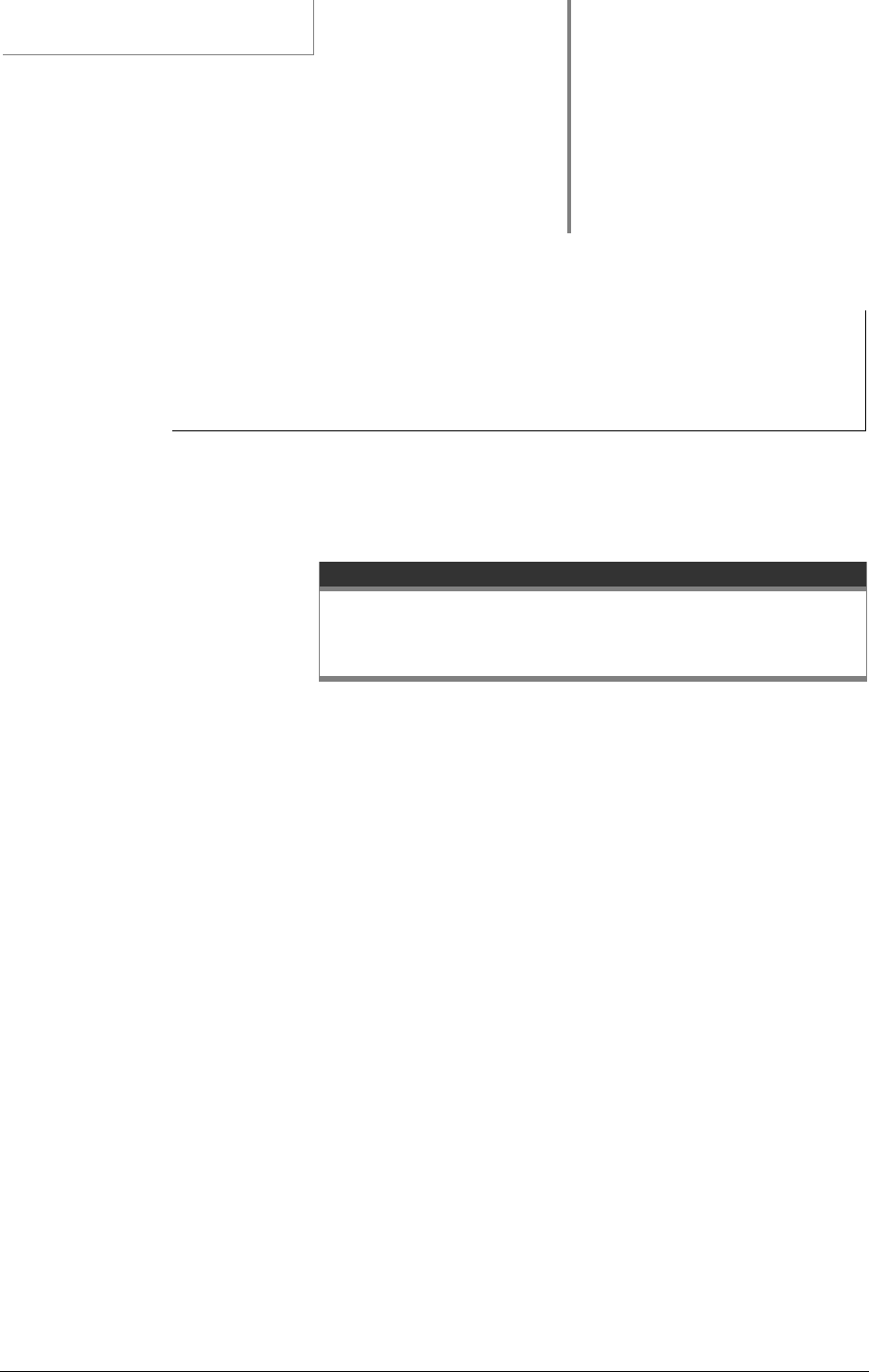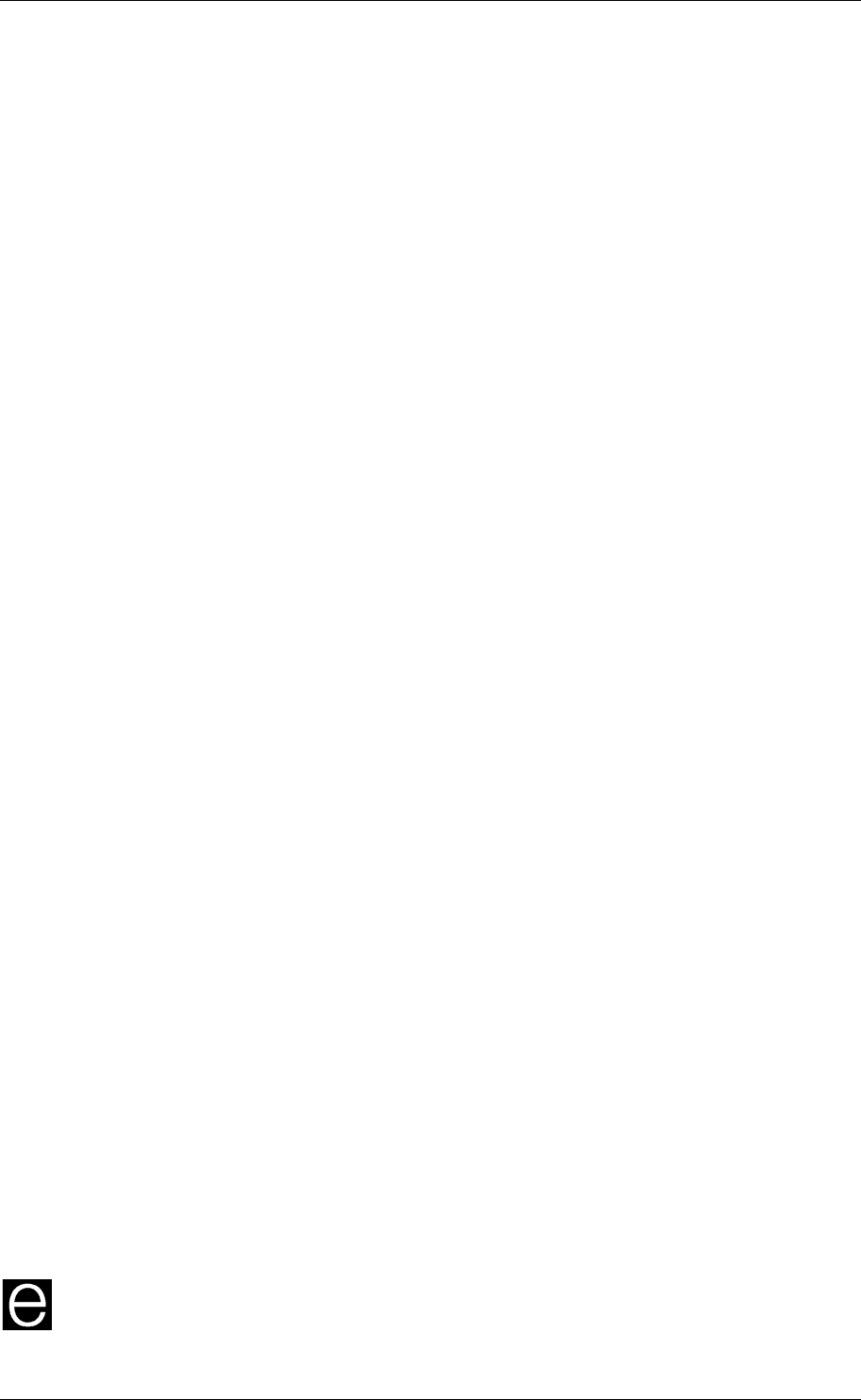ACCA P1 Governance, Risk and Ethics - 2011 - Study text - Emile Woolf Publishing
Подождите немного. Документ загружается.


Paper P1: Governance, risk and ethics
314 © Emile Woolf Publishing Limited
members review and agree to each year when they renew their ACCA membership
and submit their CPD (continuing professional development) return.’
Integrity
An accountant must be honest and straightforward in his professional and business
dealings. This includes a requirement for ‘fair dealing’ and a requirement to be
truthful.
Objectivity
An accountant must not allow his professional or business judgement to be affected
by:
bias (personal prejudice)
conflicts of interest
undue influence from others: for accountants in business, this includes undue
pressure from the employer (senior management).
A very important aspect of integrity is that an accountant should not be associated
with reports or any other provision of information where he or she believes that:
the information contains a materially false or misleading statement
the information contains a statement that has been prepared and provided
recklessly, without proper care or consideration for its accuracy
there are omissions or the information is presented in a way that makes the
relevant information difficult to see, with the effect that the information could be
seriously misleading.
For accountants in public practice, ‘integrity’ is often associated with independence
of mind and judgement. For accountants in business, the concept of independence is
not relevant: however, accountants in business should try to apply the principle of
objectivity in all the work that they do.
For accountants in business, the concept of integrity also means observing the terms
of his or her employment, but avoiding involvement in any activity that is illegal. If
asked or encouraged to become involved in unlawful activity, the accountant must
say no.
Professional competence and due care
An accountant has a duty to maintain his professional knowledge and skills at a
level that enables him to provide a competent professional service to his clients or
employer. This includes a requirement to keep up to date with developments in
areas of accounting that are relevant to the work that he does.
Accountants should also act in accordance with relevant technical and professional
standards when doing their work for clients or employer.

Chapter 14: Professional practice and codes of ethics
© Emile Woolf Publishing Limited 315
Confidentiality
Accountants must respect the confidentiality of information obtained in the course
of their work. This applies to the confidentiality of information within the firm or
employer’s organisation, as well as to confidentiality of information about clients
(for accountants in professional practice).
The requirement to keep information confidential applies:
in a social environment as well as at work: for example, an accountant must be
careful of what he says to a good friend who also happens to be a business
associate, or to a wife or husband who is also a professional accountant
after the accountant has moved to another job – confidentiality applies to
information obtained when working for a former employer.
In addition, confidential information must never be used to obtain a personal
benefit or a benefit for a third party.
There are some circumstances when the disclosure of confidential information is
permitted or even required by law.
Confidential information about a client (or employee) can be disclosed if the
client (or employee) has given permission. Before disclosing the information,
however, the accountant should consider whether the disclosure might harm a
third party.
Confidential information must be disclosed to the authorities in certain
circumstances. These circumstances depend on the laws of the country. In the
UK, for example, tax inspectors or the police might obtain a court order
(warrant) to take away files relating to a client.
The law might also require the disclosure of confidential information to the
appropriate authorities. For example, firms of accountants are expected to
disclose suspicions of money laundering by a client to the appropriate
authorities. (The details of anti money laundering laws may very between
countries). In addition, tax evasion is a crime and accountants are required to
report tax evasion by clients to the authorities. However, accountants are not
expected to disclose client information to the authorities where the work for the
client is covered by legal professional privilege.
Disclosure is also permitted when the accountant has a professional right or
duty, and disclosure is not prohibited by law. An example is the right of ACCA
members to respond to an enquiry by the ACCA.
Professional behaviour
Accountants are required to observe relevant laws and regulations, and to avoid
any actions that would discredit the accountancy profession.
This requirement covers advertising by accountants, which must be truthful and
must not disparage the services provided by ‘rival’ firms.

Paper P1: Governance, risk and ethics
316 © Emile Woolf Publishing Limited
Technical standards
A professional accountant should perform his professional tasks in accordance with
the relevant technical and professional standards. Technical and professional
standards include:
standards issued by IFAC (such as International Standards on Auditing) or a
similar national regulatory body
financial reporting standards (IFRSs)
standards and regulations of the member’s professional accountancy body
relevant legislation.
Professional accountants have a duty to carry out with care and skill the instructions
of an employer or client, insofar as these are compatible with the ethical
requirements for integrity, objectivity and (in the case of accountants in public
practice) independence.
Example
You are an accountant working in public practice. You receive a visit from two
police officers, who ask to see the files for one of your clients, a small import-export
company. They show you a warrant that authorises them to take away the client
files.
What should you do?
Answer
The requirement to maintain confidentiality of client information does not apply
when authorities such as the police have a warrant to inspect or take files relating
to the specific client.
You should be polite to the police in responding to their request, and you should
check the details of the warrant before providing the files that are required. If there
is any doubt about the details in the warrant, you might wish to ask for a legal
opinion before handing over the files.
You should not tell the client what has happened.
Example
You are an accountant responsible for the audit of a business client. During the
course of your audit work you discover that an employee of the client has probably
been engaged in a fraudulent activity. You are not entirely certain that fraud has
occurred.
What should you do?

Chapter 14: Professional practice and codes of ethics
© Emile Woolf Publishing Limited 317
Answer
The issue of confidentiality does not arise here, because the problem relates to an
employee of the client. You should report your suspicions to a person of authority
in the client organisation.
If the fraud appears to be minor, you might decide to leave the matter in the hands
of the client. If the fraud appears to be a major crime, you should check what actions
the client takes in reporting the matter to the police authorities, to satisfy yourself
that appropriate action has been taken.

Paper P1: Governance, risk and ethics
318 © Emile Woolf Publishing Limited

© Emile Woolf Publishing Limited
319
Paper P1
Governance,riskandethics
CHAPTER
15
Conflicts of interest and
ethical conflict resolution
Contents
1 Ethical threats and safeguards
2 A model for resolving ethical conflicts

Paper P1: Governance, risk and ethics
320 © Emile Woolf Publishing Limited
Ethical threats and safeguards
Rules-based and principles-based approaches to ethical dilemmas
The nature of ethical threats
The nature of ethical safeguards
Threats to accountants in business
1 Ethical threats and safeguards
1.1 Rules-based and principles-based approaches to ethical dilemmas
When accountants are faced with an ethical problem, they need to know what to do.
If there is a threat to their compliance with the fundamental principles of the ethical
code, how should they ensure their compliance and deal with the threat?
There are two possible approaches that the professional accountancy bodies could
take, a rules-based approach and a principles-based approach.
A rules-based approach is to identify each possible ethical problem or ethical
dilemma that could arise in the work of an accountant, and specify what the
accountant must do in each situation.
A principles-based approach is to specify the principles that should be applied
when trying to resolve an ethical problem, offer some general guidelines, but
leave it to the judgement of the accountant to apply the principles sensibly in
each particular situation.
The IFAC Code (and other codes of accountancy ethics, including the ACCA Code)
take a principles-based approach, with some guidelines.
The main reason for taking a principles-based approach is that it is impossible to
identify every ethical dilemma that accountants might face, with differing
circumstances in each case. Since it is impossible to identify every problem that
might arise, rules could only be provided for some problems but not others.
The IFAC Code makes this point, saying that it is exceedingly difficult to predict all
situations that create threats to compliant with the fundamental principles and the
suitable course of action. Threats needing different safeguards may exist depending
on the work assignment or engagement. It is in the public interest, therefore, to
have a conceptual framework for the accountants to follow, rather than a set of strict
rules.
It is interesting to note that IFAC considers the public interest when choosing a
principles-based approach in preference to a rules-based approach.

Chapter 15: Conflicts of interest and ethical conflict resolution
© Emile Woolf Publishing Limited 321
The nature of a principles-based approach
The recommended approach to resolving ethical problems, which will be
considered in more detail later, is based on the following steps:
Identify threats to compliance with the fundamental principles. Accountants
have an obligation to identify any threat to their compliance with the
fundamental principles, when it could reasonably be expected that they should
be able to identify it.
Evaluate the threat. Qualitative factors as well as quantitative factors should be
considered in the assessment of a threat to compliance. Insignificant threats may
be ignored but others should be dealt with.
Respond to the threat. If it is ‘not insignificant’, the accountant should apply
appropriate safeguards, if he can, to eliminate the threat or reduce the threat to
an insignificant level.
If suitable safeguards cannot be applied, more drastic action will be needed,
such as refusing to carry out a professional service, ending the relationship with
a client or resigning from the job.
1.2 The nature of ethical threats
Threats to compliance with the fundamental ethical principles are grouped into five
broad categories:
Self-interest threats, or conflicts of interest. These occur when the personal
interests of the professional accountant, or a close family member, are (or could
be) affected by the accountant’s decisions or actions.
Self-review threats. This type of threat occurs when a professional accountant is
responsible for reviewing some work or a judgement that he was responsible for
originally. An extreme example would be a situation where a professional
accountant prepares the annual financial statements for a corporate client and
then is appointed to do the audit.
Advocacy threats. This type of threat can occur when an accountant promotes
the point of view of a client, for example by acting as a professional witness in a
legal dispute. Acting as an advocate for the client can reach the point where the
objectivity of the accountant is compromised.
Familiarity threats. A familiarity threat arises from knowing someone very well,
possibly through a long association in business. The risk is that an accountant
might become too familiar with a client and therefore becomes more
sympathetic to the client and more willing to accept the client’s point of view.
Intimidation threats. A professional accountant might find that his objectivity
and independence is threatened by intimidation, either real or imagined.
These threats to compliance with the fundamental ethical principles apply to firms
of accountants, in their dealings with clients, as well as to individual accountants.
Example
Examples of ethical threats are listed below. Some apply to accountants in public

Paper P1: Governance, risk and ethics
322 © Emile Woolf Publishing Limited
practice, and some apply to accountants in business. Some apply to both types of
accountancy work.
Threats from a conflict of interest
Accountants in public practice Accountants in business
The accountant has a financial interest
in the client.
The accountant has a financial interest
(for example, holds shares or share
options in the employer company).
The accountant has a joint financial
interest with the client in a business
venture.
The competence of the accountant to do
the work is in question.
The competence of the accountant to do
the work is in question.
The accountant is offered gifts or
hospitality by a client.
The accountant is offered gifts or
hospitality by a customer or a supplier.
There is a risk of losing the client, and
the client taking his business
somewhere else.
There is the risk that the accountant
might lose his job.
Contingency fees. The client will pay a
fee to the accountant only if a particular
event occurs or a particular outcome is
achieved. (The fee is dependent on the
achievement of the desired outcome.)
The accountant has a financial interest
in achieving the outcome.
The accountant’s basic pay or bonus
might be affected.
There is a possibility that the client will
offer a job to the accountant.
Self-review threats Familiarity threats
The accountant discovers a significant
error on checking some work, and he
was responsible for making the original
error.
A member of the audit team has a close
family relationship with a director or
senior officer of the client company, or
with an employee of the company who
is in a position to influence significantly
the subject matter of the audit
The accountant is asked to report on the
operation of a system that he was
responsible for designing and
implementing.
Accepting gifts or hospitality from a
client, customer or supplier. (This is both
a self-interest threat and a familiarity
threat).
A member of the audit team was
recently an employee of the client and
involved in the work subject to audit.
The senior personnel in an audit team
have a long association with the client
company.
The accountant is assigned to check any
work that he did previously for the
client as a professional service.
An accountant in business has along
business association with another
person, who might therefore be able to
influence his judgement (integrity).

Chapter 15: Conflicts of interest and ethical conflict resolution
© Emile Woolf Publishing Limited 323
Advocacy threats Intimidation threats
The accountant is involved in
providing a professional opinion in
support of a client, in a case involving a
dispute with a third party (possibly
litigation).
The accountant is threatened with
dismissal or a loss of benefits (pay,
bonus, promotion) for failing to agree to
the demands of management colleagues.
The accountant has to deal with a
dominant personality who expects
everyone else to do what he tells them
to.
An accountant in public practice is
threatened with litigation by a client.
An accountant in public practice is
under pressure from a client to reduce
the amount of work in an audit, in order
to reduce the audit fee. (This is a threat
to the integrity of the audit work.)
There are some threats to compliance with the fundamental ethical principles,
particularly a threat to integrity and professional conduct that are not easily
categorised as one of the five threats listed above.
Threats to integrity and professional conduct can be classified as threats to self-
interest.
Example
You are an accountant working in public practice. You are approached by a
subsidiary company of a foreign parent company. This company would like you to
provide a number of professional services. The parent company is based in a
country where you have no professional contacts.
What are the ethical risks?
Answer
There are ethical risks in taking on an unknown new client. The new client might
be involved in illegal activities, such as money laundering or drug trafficking.
As an accountant, you might become involved in providing services in support of
criminal activities, which would threaten your integrity and professional conduct.
There must be ethical safeguards to ensure that you do not take on a new client
without first ‘getting to know’ the client and satisfying yourself that there are no
ethical concerns.
